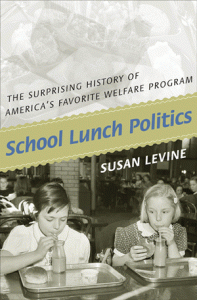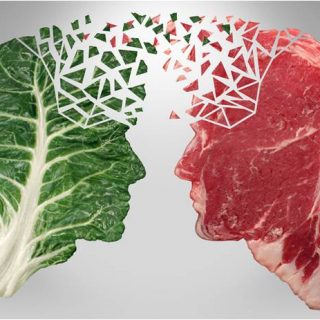 Whether kids love or hate the food served there, the American school lunchroom is the stage for one of the most popular yet flawed social welfare programs in our nation’s history. School Lunch Politics covers this complex and fascinating part of American culture, from its origins in early twentieth-century nutrition science, through the establishment of the National School Lunch Program in 1946, to the transformation of school meals into a poverty program during the 1970s and 1980s. Susan Levine investigates the politics and culture of food; most specifically, who decides what American children should be eating, what policies develop from those decisions, and how these policies might be better implemented.
Whether kids love or hate the food served there, the American school lunchroom is the stage for one of the most popular yet flawed social welfare programs in our nation’s history. School Lunch Politics covers this complex and fascinating part of American culture, from its origins in early twentieth-century nutrition science, through the establishment of the National School Lunch Program in 1946, to the transformation of school meals into a poverty program during the 1970s and 1980s. Susan Levine investigates the politics and culture of food; most specifically, who decides what American children should be eating, what policies develop from those decisions, and how these policies might be better implemented.
Even now, the school lunch program remains problematic, a juggling act between modern beliefs about food, nutrition science, and public welfare. Levine points to the program menus’ dependence on agricultural surplus commodities more than on children’s nutritional needs, and she discusses the political policy barriers that have limited the number of children receiving meals and which children were served. But she also shows why the school lunch program has outlasted almost every other twentieth-century federal welfare initiative. In the midst of privatization, federal budget cuts, and suspect nutritional guidelines where even ketchup might be categorized as a vegetable, the program remains popular and feeds children who would otherwise go hungry.
As politicians and the media talk about a national obesity epidemic, School Lunch Politics is a timely arrival to the food policy debates shaping American health, welfare, and equality.
Contents :
INTRODUCTION: The Politics of Lunch
CHAPTER 1: A Diet for Americans
The Search for a Scientific Diet
A Diet for Americans
Nutrition and Malnutrition
School Lunch as Public Policy
CHAPTER 2: Welfare for Farmers and Children
School Lunches for Hungry Children
Eating the Surplus
The Institutionalization of School Lunch
CHAPTER 3: Nutrition Standards and Standard Diets
School Lunch Standards
Nutrition in the National Defense
Eating Democracy
CHAPTER 4: A National School Lunch Program
Agriculture or Education?
The Liberal Compromise
Discrimination and Segregation
CHAPTER 5: Ideals and Realities in the Lunchroom
Nutrition and Surplus Commodities
Nutrition and the Food Service Industry
The Limits of the Lunchroom
CHAPTER 6: No Free Lunch
Discovering Hunger in America
Agriculture or Welfare?
Food and the Poverty Line
CHAPTER 7: A Right to Lunch
The Free Lunch Mandate
The Women’s Campaign
School Lunch and Civil Rights
Eligibility Standards and the Right to Lunch
CHAPTER 8: Let Them Eat Ketchup
Who Pays for Free Lunch?
Combo Meals and Nutrition Standards
Ketchup and Other Vegetables
EPILOGUE Fast Food and Poor Children
Notes
Order the book
Food 2.0 LAB in association with Amazon
Books by the same author –
















